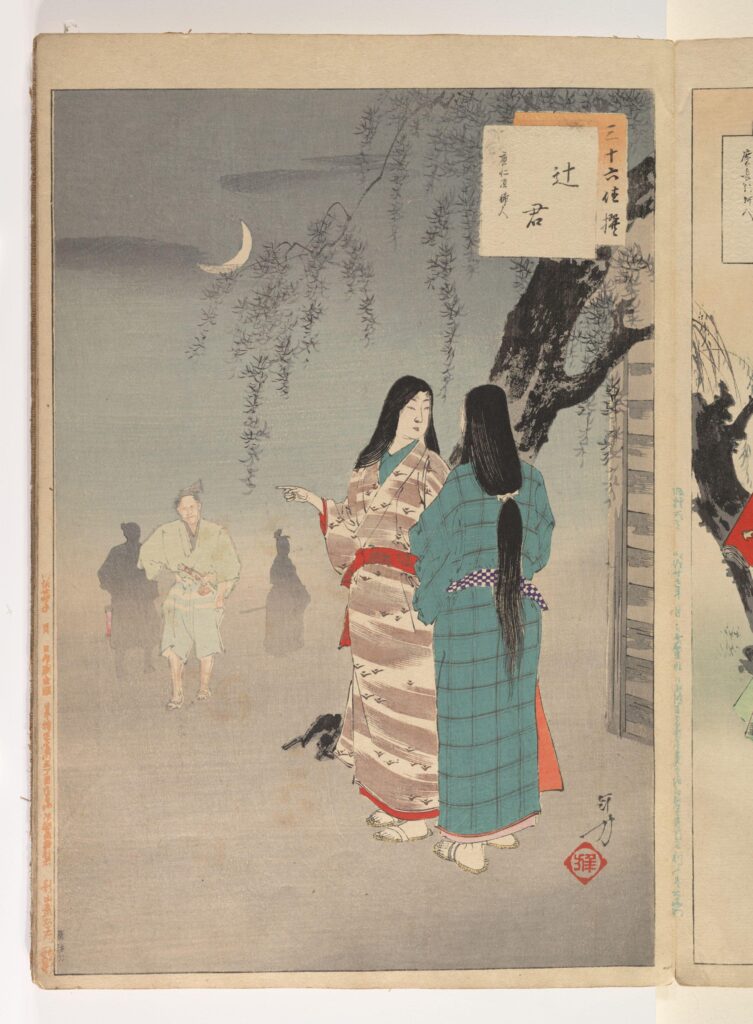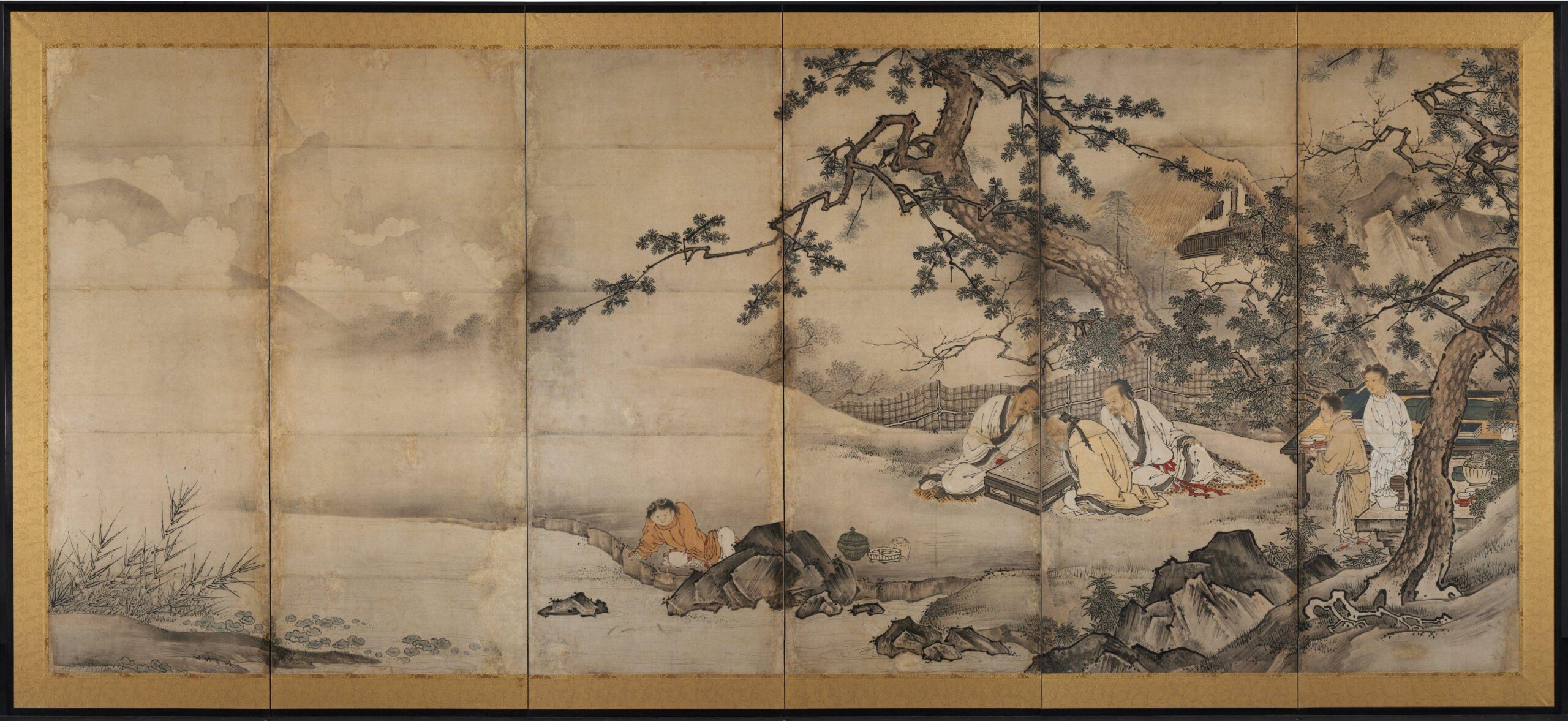Introduction:The theme of rituals and courtly politics was chosen to dive deeper into the Heian court and its functions, and later, into medieval and early modern politics. There’s an emphasis on the Heian court’s love for beauty and the idea that life is impermanent. Because of this mindset, the cultivation of art and literature was extremely prominent during this period. The role of women shifted into the private sphere, but they were still highly involved in art and produced a good portion of the literature from this period. The influence of Buddhism is also noteworthy, even more so than in the Nara era. Monastic orders were regulated under the ritsuryo system, and Buddhist sects were assimilated into the imperial system. Rituals were an important tradition to the nobility and imperial government. These rituals were tied to Buddhism, which explains the rise of monks in the social standing of Japan. The Fujiwara clan dominated the politics of the Heian court. Although the Fujiwara clan were not directly emperors, their daughters often married young emperors, so they were highly involved in all levels of government. They held much influence over court proceedings and usually held important positions and advising roles. They also played a large role in fostering the culture of sensitivity and sophistication of the time. “The Tale of Genji” was written by a member of the Fujiwara family and serves as a good depiction of the culture and mindset of the nobility of the time. The Heian court was highly ceremonial. They separated themselves from the common people and as a result, did a terrible job managing the territory. The Shoen system allowed aristocrats to accumulate land and wealth and transformed the territory into private estates. This system eventually led to the creation of the samurai and set the stage for Medieval Japan.
The Medieval period was a time of political turmoil and violence throughout Japan. It began with the rule of the Kamakura Shogunate and was followed by a state of war between Emperor Go-Daigo and his loyalist supporters. After many violent interactions between the Emperor and the new Shogun, Ashikaga Takauji established the Muromachi Shogunate, which officially began the long-lasting Ashikaga Era(1336-1573). The significance of these events is that they resulted in the decline of imperial authority in the courts and transitioned the samurai as the dominant class in Japanese society.
The Tokugawa shogunate was a military dictatorship that gained power through violence and war, however, the shogunate itself was a relatively peaceful period for Japan. They established a strict hierarchy based on Neo-Confucianism that put warriors at the top of the hierarchy and merchants at the bottom. In actuality though, merchants tended to be wealthy because of their trade so they held more power than the hierarchy implied. The shogunate promoted literacy and education, so art and culture flourished during the period. One of the most important policies the Tokugawa established was an isolationist one called Sakoku. They distrusted foreigners although they allowed Dutch teachings into their education. Pressure from the Western world to open their borders combined with internal strife eventually led to the collapse of the Tokugawa shogunate.
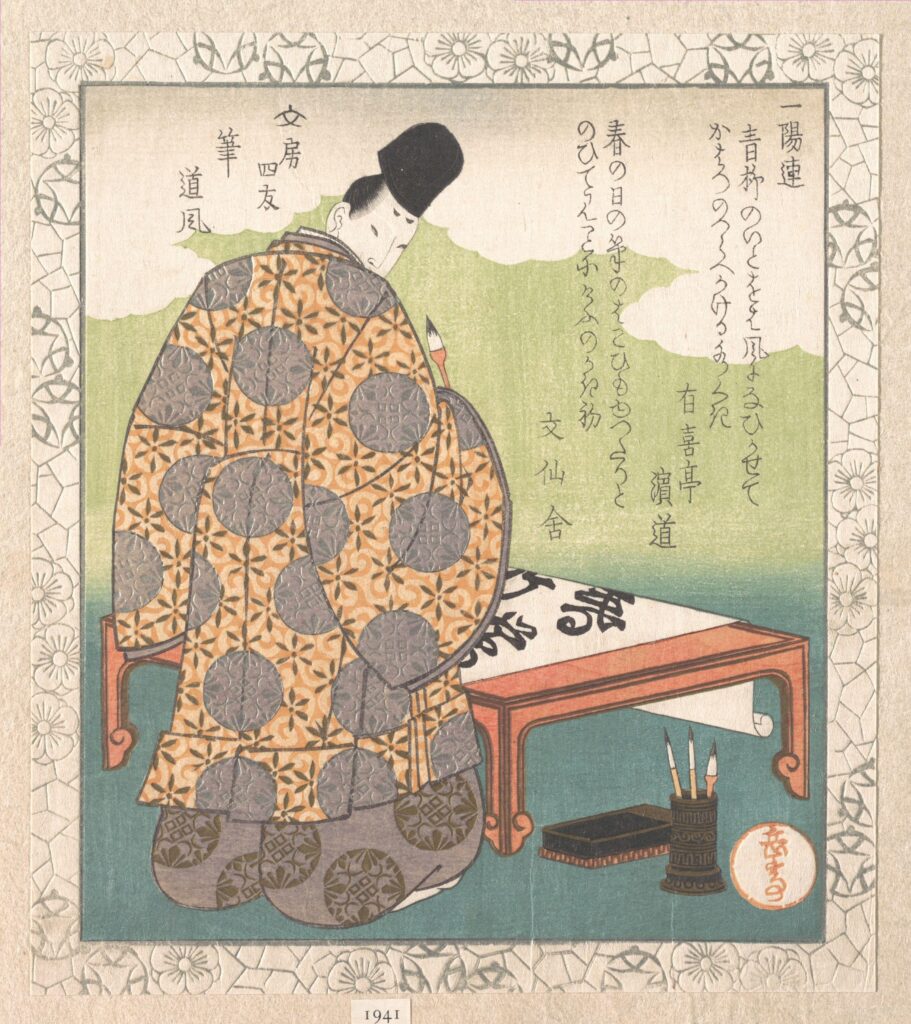
In the image, a calligrapher of the court is portrayed writing in front of a table. He seems to be kneeling, as the table is very low, and Chinese and Japanese characters surround him. The image itself was produced in the 19th century but it depicts a scene from the Heian period, some 600-700 years earlier. Although the Heian period wasn’t prosperous economically, it was something of a golden age in terms of art for ancient Japan. The Fujiwara family encouraged art and sophistication in their court which presents itself in many ways when analyzing Heian period art and literature. The fact that there is so much art and literature that dates to the Heian is in itself a testament to the rich culture of the time. Calligraphy was a beloved art form which is reasonable considering the Heian period was a time when much literature was produced in Japan. The image can also be seen as a reflection of the cultural exchange happening between China and Japan at the time. For a long time Japan and China had close relations and often shared ideas back and forth. However during the Heian, Japan started to slowly cut ties with China and some Chinese practices were adopted, they were adapted in a way that made them uniquely Japanese. An example of this is the kana script. – Mizpah Quartey
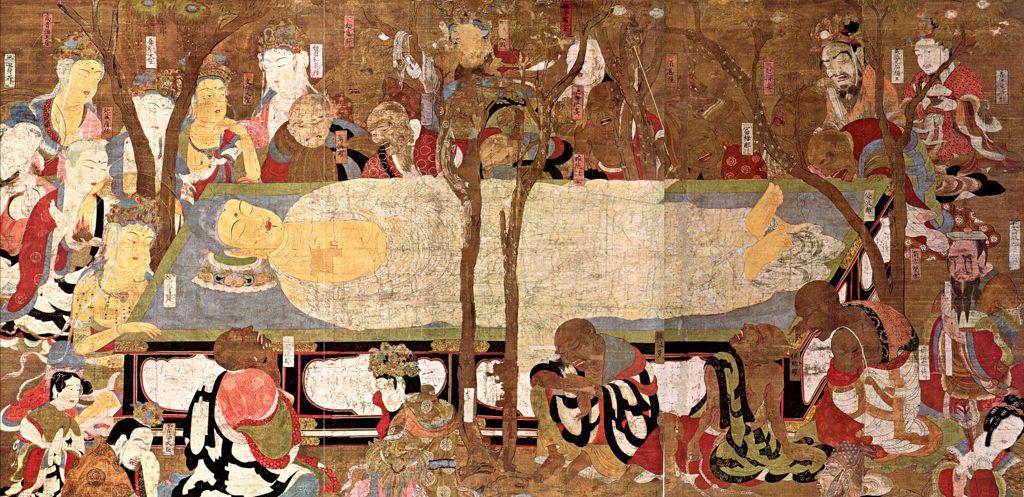
This painting was produced in 1086, during the late Heian period and depicts the death of Sakyamuni, aka the Buddha who founded the Buddhist religion. As Mahayana Buddhism spread throughout Japan, it was adopted by the court and played a significant part in shaping courtly rituals and tradition. By the Heian period, Buddhism had become central to Japanese life and had made its imprint on the nation’s culture, in both commoner and royal circles. By then, the Shingon and Tendai schools had been well established for a few centuries. There was a large emphasis on the fleeting nature of life and therefore the importance of beauty during the Heian period. It is in line with the culture of the time to produce a painting with such intricate detail of both the faces portrayed and the environment of the setting. Something interesting about this painting is that it was rendered on silk and ink. While this is not a common medium used in art anymore, it allows historians to have insight on the type of materials favored for art during the Heian era. The Parinirvana of Shaka represents the Buddha finally breaking the rebirth and death cycle which is why it’s a holiday celebrated all around the world in Buddhist circles. In the image, there are people of all types surrounding Shaka, women and men, the old and young, and the poor and rich. This painting was likely displayed in temples or in the court during Parinirvana Day. – Mizpah Quartey
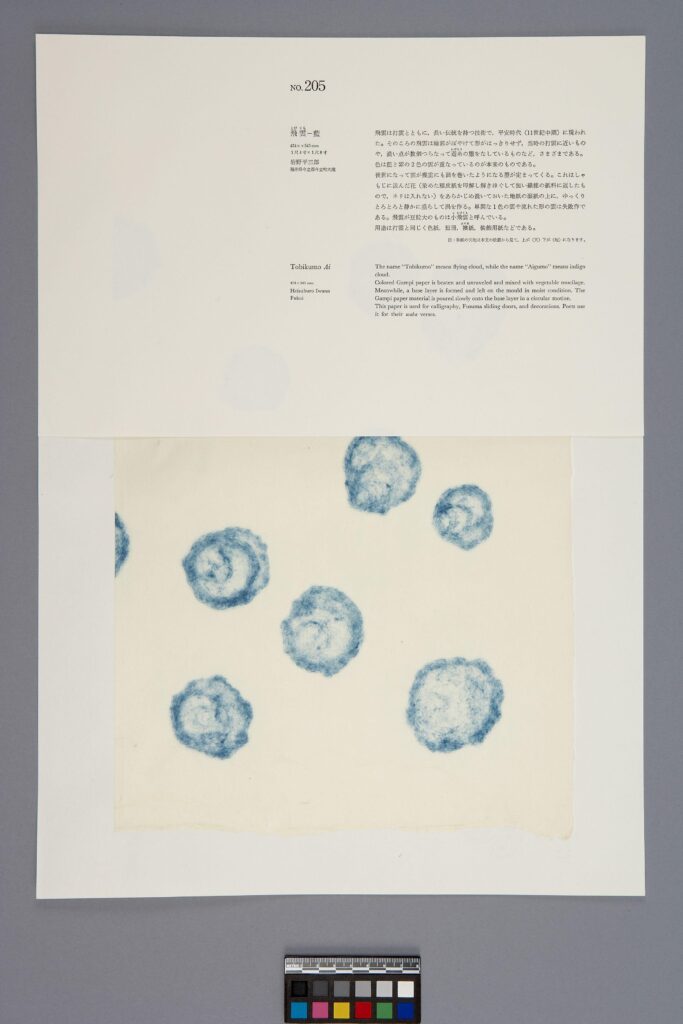
The significance of this image is that it represents the Heian court’s admiration for beautiful calligraphy. A big part of their culture is elegance and how appearance affects how one can perceive a writing, painting, or architecture. The type of writing represented is a form of poetry called waka, and is written on a specific kind of Japanese paper called washi. It involves concrete patterns and the use of colors to portray a certain mood. There are distinct, indigo colored circles painted over a yellow piece of paper to emphasize specificity and beauty. It is important to note this kind of papermaking is valued by Shinto and Buddhist religions because they use it for poetry and decorations during religious ceremonies. The calligraphy in this image shows how the Heian Court valued the appearance of their writings just as much as they valued the content. A big part of one’s social status at the time was shown through their writing, and this kind of calligraphy separated aristocrats in the Heian Court from other members of society who could not write as elegantly. Washi was much more to the Heian Court than just a piece of paper, it was used as a means for them to express their poetry, religious beliefs, and social status. In a way, this form of calligraphy transformed literature into a form of art and beauty rather than just writing words on pieces of paper.
Photo and description by Jake Rothmann
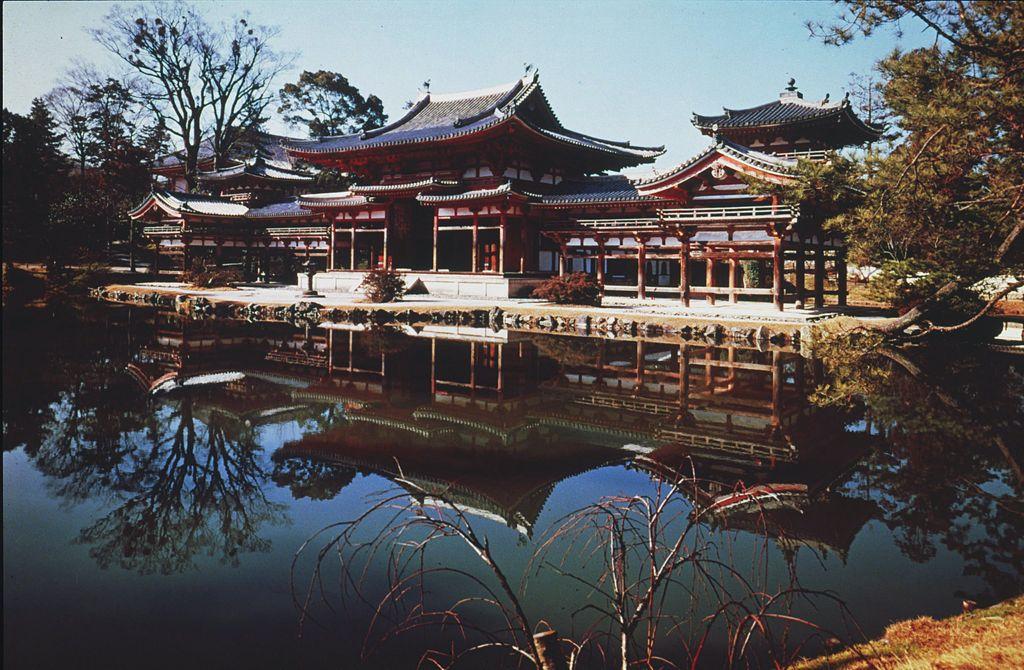
This is a picture of the Byodoin Temple in Kyoto Japan during the year of 1052. The temple is constructed in a symmetrical way, making it easier for the viewer to notice and admire its beauty. There is a beautiful pond located in front of the building, and it clearly reflects the image of the temple on its surface. The reflection is definitely an eye opening feature for the viewer, and further emphasizes the concrete details that make this piece of architecture very unique. There is a beautiful landscape of trees and rocks surrounding the temple, and the materials used for the construction of this temple seem to be ahead of its time. This is a representation of Buddhist Pure Land architecture. The significance of this image is it shows the prestige and emphasis on architecture by the Fujiwara clan during the Heian period. The Heian court really admired the beauty of architecture and how humans have a strong emotional connection to these buildings religiously or personally. This kind of architecture represents a sect or teaching of Buddhism called Pure Land, and many aristocrats part of the Heian court(the Fujiwara clan) supported this new teaching and the idea of salvation.
Photo and description by Jake Rothmann
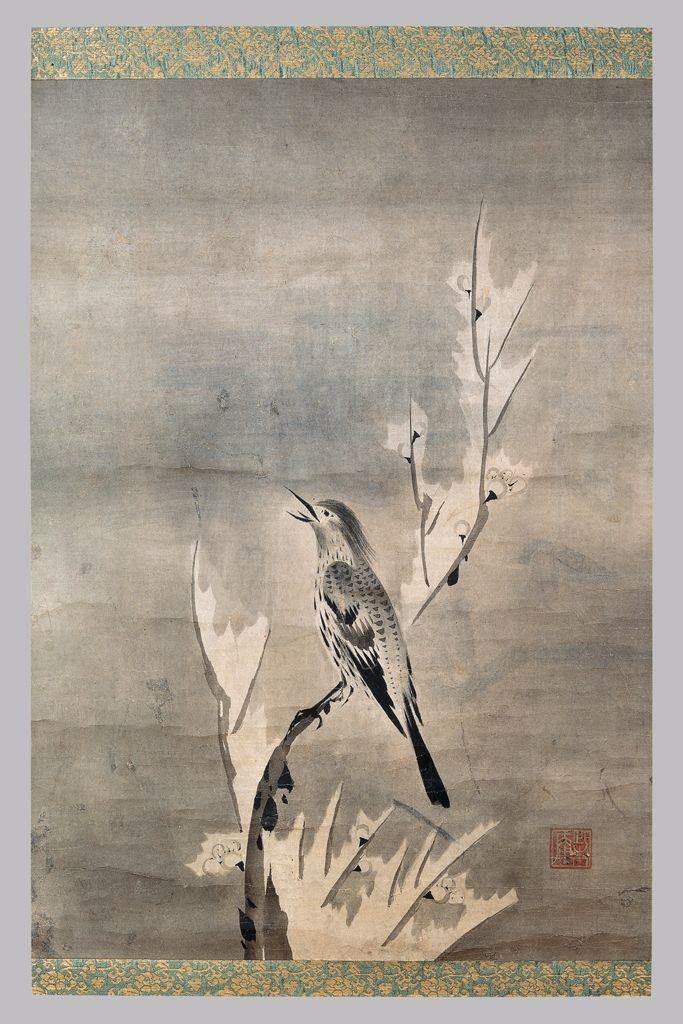
This image depicts a natural scene of a bird on a branch, presumably during the winter season. The image comes straight from the Ashikaga period which gives historians an insight into how Zen Buddhism directly affected Japanese art and by extension, culture.
The practice of Zen Buddhism had already been in place in China for centuries, but in Japan, the concept took its own unique shape. Buddhist texts were combined with Shinto teachings and formalized, which meant the two belief systems were no longer seen as separate practices, although this had been a trend for some centuries by this point in Japanese history. Zen aesthetics took inspiration from zazen or seated meditation that Zen Buddhism teaches. This idea of looking for “empty spaces” in meditation translated well into art and design during the period. It also drew from Heian courtly values of art and sophistication. Since this era was so strife with warfare it seems odd that the art so highly contrasted the violence, but perhaps it was because of this violence that artists focused more on absence “mystery and grace”. The Zen concept of transcending the mind found itself not only in art, but in theater and entertainment. Actors were often masked to conceal turbulent emotions. -Mizpah Quartey
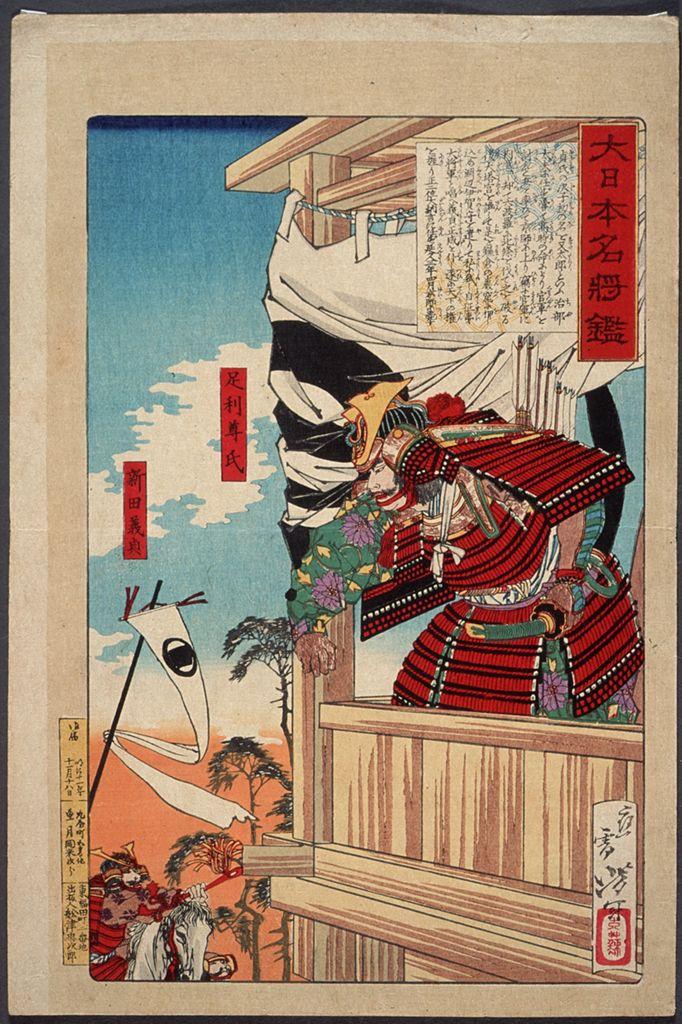
The historical context during this period is after the fall of the Kamakura shogunate, when Emperor Go-Daigo attempts to reestablish imperial control over the capitol. The two men pictured in the image are named Nitta Yoshisada and Ashikaga Takauji. Both of these men initially supported Go-Daigo’s side of imperial loyalists and helped him take down the forces of the Kamakura shogunate. However, as portrayed in the image, political tensions between Yoshisada and Takauji resulted in them being enemies after the fall of the Kamakura. Ashikaga Takauji decided to rebel against Emperor Go-Daigo, and established his own imperial court in the North. Nitta Yoshisada remained loyal to Emperor Go-Daigo and this resulted in a civil war between the Ashikaga Shogunate and the imperial loyalists. The image reveals the two men in battle against one another, with Ashikaga Takauji displayed on a pedestal or having the higher ground to reveal his victory over Yoshisada. One can see how Takauji is portrayed as a new shogunate and his armor represents the Ashikaga crest. His armor is really appealing to the viewer with vibrant colors of green, yellow, purple, and red. The material of clothing he is wearing seems to be of very high quality, revealing the new shogunate as powerful and wealthy. The perspective of the image focuses mainly on the facial features of Takauji, not Yoshisada. Ashikaga Takauji is portrayed to have very defined, manly facial features such as a beard, grinding his teeth together, and a fierce look in his eyes to signify his raw strength.
Photo and description by Jake Rothmann
